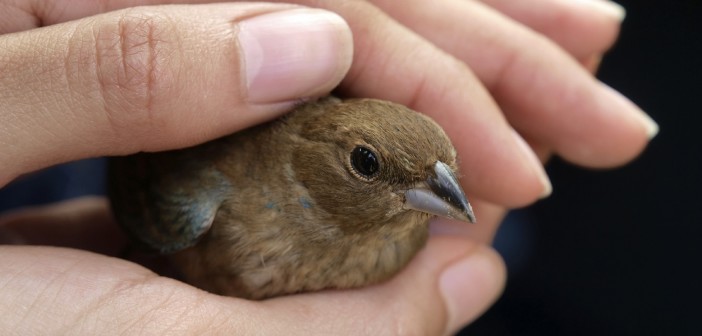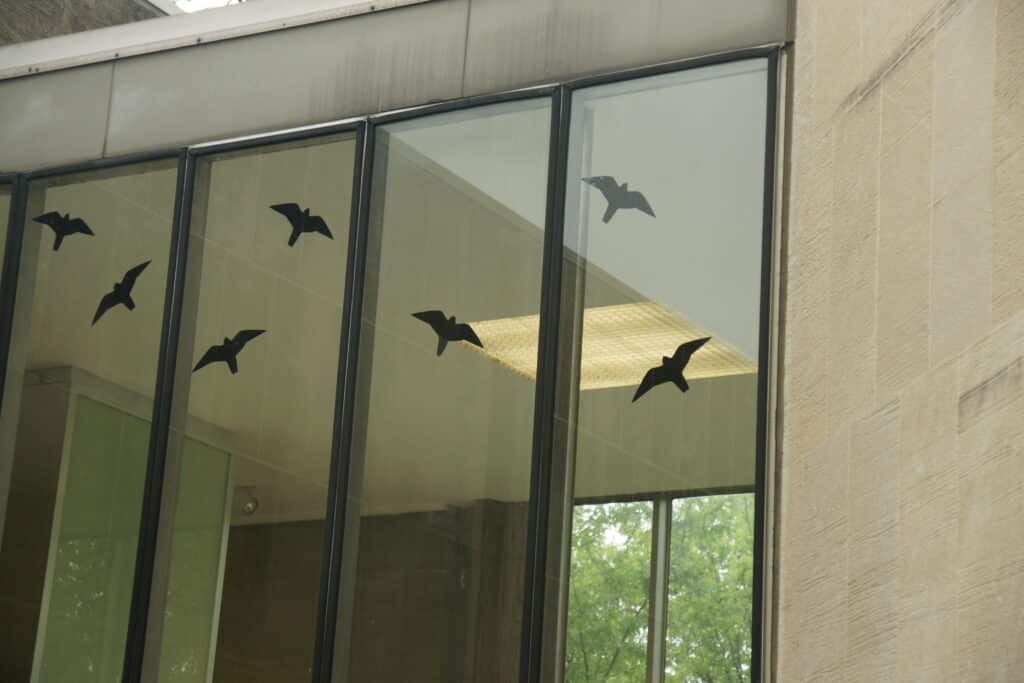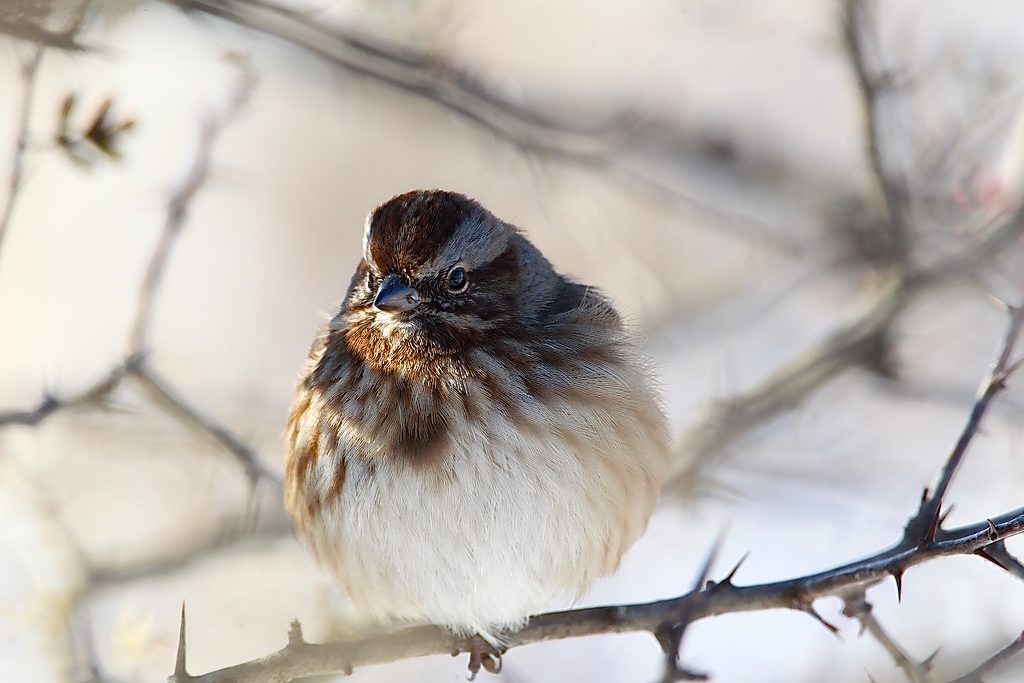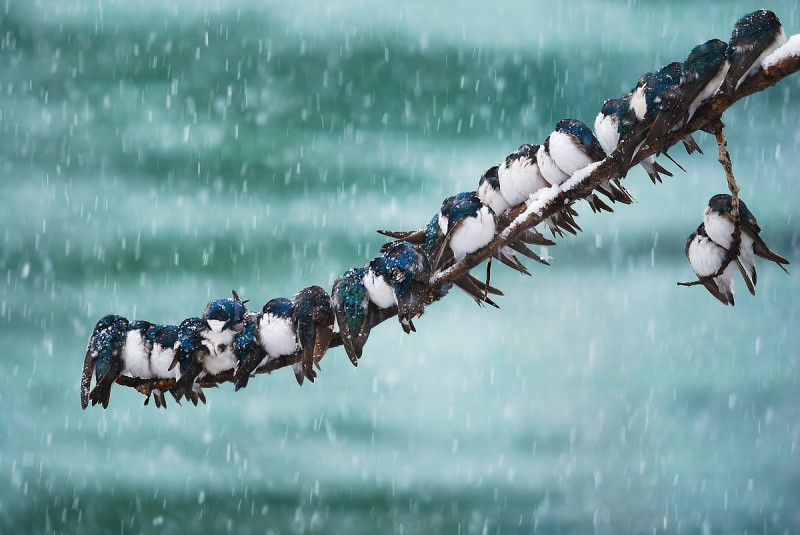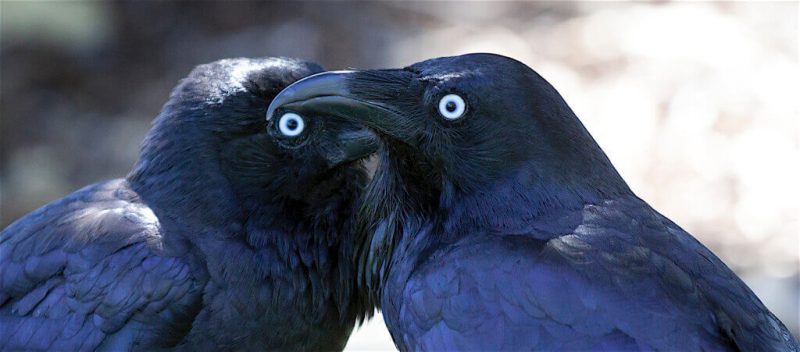Sometimes, birds need our help. Here are answers to important questions about doing just that.
How to free a trapped bird
How to keep birds from flying into windows
How to care for an injured bird
Is it OK to observe babies in their nests?
How to care for an orphaned bird
How to care for a rescued bird
Do baby birds have to be taught to fly?
How do birds stay warm in winter?
Do birds use birdhouses in winter?
How to free a trapped bird
Be gentle; birds are fragile, with legs not much thicker than a toothpick. You can try to catch one with a large net. If you succeed, be very gentle in how you handle it. Swip the net downward because the bird’s instinct will be to fly upward. Or, if you can corner it, gently wrap your hand around it, keeping its wings folded. If it’s in flight, a lightweight towel can be thrown over it. But all these ways are traumatizing for the bird. The very best thing for the bird is to lure it out of your house.
The key to doing that is to have it brighter outside the room than inside because the bird will navigate toward the light. If it’s in an attic, open the attic window and turn off the lights. It will go toward the sunshine. If there’s no attic window, then turn on all lights in the room below (be sure to close all doors to that room) and open the windows there. Eventually, the bird will be drawn out of the attic into the lighted room. With some luck, it might fly straight from the attic and out a window. If it enters the room but doesn’t leave, dim the lights and wait. It will eventually fly toward the sunshine. It’ll be stressed, so stay away and give it some time.
How to keep birds from flying into windows
An estimated 100 million to one billion birds in the U.S. are killed every year from window glass collisions. That’s because moonlight reflects on windows at night, and trees do in the daytime. The birds don’t realize until too late that they’re flying toward a solid pane of glass. Birds also hit windows if they’re being chased by a predator or have a momentary lapse of judgment. Although the crashes can’t be prevented entirely, there are a few things you can do to help:
- Place bird feeders and birdbaths at least 25 feet (7.6 m) from windows. This allows them to change course or apply the “brakes” when they realize what’s ahead. Conversely, place them within 2–3 feet (61–91 cm) of windows. This prevents birds from gaining enough speed to cause injury.
- Decals such as those shown above seem to work well. They’re available at bird supply stores or online. Apply them to the outside of windows, where the birds will see them. Some decals have a coating that reflects ultraviolet sunlight—it glows for birds but isn’t visible to humans. You’ll need more than one decal per window.
- Or Mylar® reflective strips can be pinned at the top on the outside of windows. They’ll move in the breeze to help alert birds.
- David Sibley, noted bird guide author and illustrator, suggests trying this. It isn’t foolproof, but it may help: Draw Xs using a yellow highlighter on the inside of windows. The highlighter’s fluorescence is visible to birds. It works best in sunlight and not very well on cloudy days or low light.
How to care for an injured bird
Every year, billions of birds are killed when they fly into windows. Fooled by reflections in the glass, they don’t recognize until too late that it’s solid. A bird may survive if it doesn’t strike too hard, in which case it may flutter to the ground, stunned, unable to fly for a time. It may sit or lie still, often with eyes closed, while it recovers. Here’s what to do to protect it:
The bird is highly vulnerable while recovering, so keep an eye on it until it rallies and flies away (usually an hour or less). If you have pets, keep them away. Or, you can safely contain a bird while it recovers in a small paper bag with paper towels on the bottom (don’t shred the towels.) Secure the top, cut a few small air openings in the bag, and place it in a quiet, darkened room where it’ll be safe. Ensure the bird’s movements can’t topple the bag onto the floor.
Check it periodically; if it begins to act feisty and tries to get out of the bag, it’s probably time to release it. Take the bag outside, reach in, and grab hold of it (hold its wings folded next to its body to keep them from becoming damaged). Or you can slowly turn the bag on its side, open it, and wait for the bird to find its way out. Release it at ground level; don’t throw it into the air. If it still seems stunned, keep it safe for another hour. Call a licensed wildlife rehabilitator if it’s still not well by then.
Is it OK to observe babies in their nests?
If you can peek into a nest, do it; it’s just too tempting to resist. But not too often, and only when the parents are away. Bird parents are very devoted to their young and will tolerate some disturbance. Too much, however, and they’ll feel forced to abandon them. How much is too much? You won’t know until it’s too late. So, peek a few times, but otherwise, watch the bird family’s activity from a distance. By the way, you shouldn’t touch the babies, but it isn’t true that human scent alone will make the parents abandon them.
How to care for orphaned birds
Most “orphaned” birds aren’t orphans. Here’s how to tell and what to do:
1. Is it featherless or nearly so?
Is it alert and opening its mouth (indicating hunger)? If so, put it back in its nest, if possible. It’ll probably be under the tree from which it fell. If it can’t be returned, build a makeshift nest out of a butter tub lined with grasses. (Be sure to poke holes through the bottom for water drainage.) Secure the tub to the tree as close as possible to the original nest and place the baby in it. Monitor the new nest to see if the parents find it. Once they do, they’ll probably carry food to both nests. If, after an hour, the parents haven’t returned or are repeatedly ignoring cries from the new nest, wrap the baby in a soft cloth, keep it warm, and transport it immediately in a box to a licensed wildlife rehabilitator.
If you can’t find the original nest, leave the baby on the ground and observe from a distance for up to an hour. It’ll cry out periodically for its parents, who should arrive with food for the nestling and its siblings. You can then track the parents’ path to the nest. If that fails, take the baby to a wildlife rehabilitator. Your local birdseed store or Parks and Wildlife Department should be able to tell you who to contact. Or check this site for a.
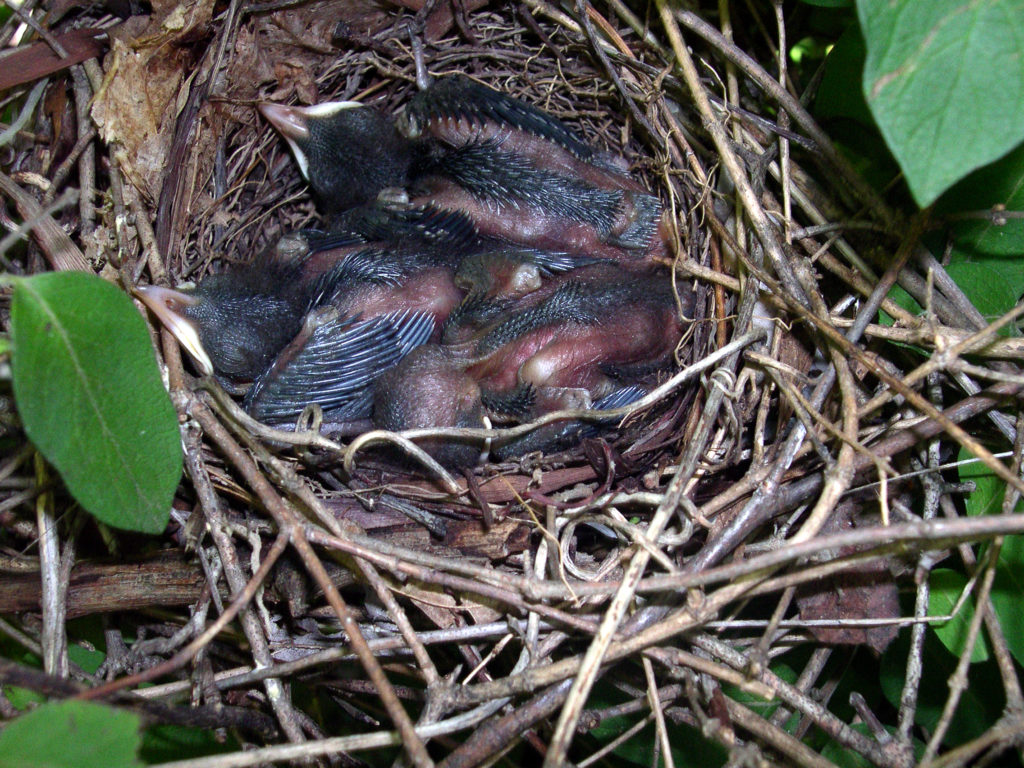
These partially feathered Gray Catbird nestlings would not survive outside the nest. (Dennis Murphy / Flickr; CC BY 2.0)
2. Does it have feathers?
If the bird has most of its flight feathers, it’s a fledgling that has voluntarily left the nest. It’s still growing its feathers and will spend a week or more on the ground while learning to fly. Its parents will watch over it and continue to feed it. If it’s exposed, like in the center of a turf area, gently pick it up and place it on one of the lowest branches of a nearby shrub, then move away. It’ll cry out when you grab it, and you may find yourself being dive-bombed by its parents! It may run from you into grasses or under shrubs, which is fine because it’ll be hidden from predators.
3. Is it a ground-nesting bird?
Some birds are supposed to be on the ground. Although we may be more familiar with birds that nest in trees, some species nest on the ground. “Precocial” species are feathered from the moment they hatch. Although not able to fly immediately, they start following their mother around, and they’re able to feed themselves. Killdeer, sandpipers, Whip-poor-wills, Nighthawks, quail, and pheasants are some of the birds that do this. So, unless the foundling is visibly ill—can’t stand or peeps weakly—it’s best to leave it be; its parents are probably watching.
4. Don’t leave your pet (especially a cat) outdoors while a fledgling is on the ground.
How to care for a rescued bird
Keep a rescued bird warm, but not too warm, as they can quickly overheat and die. You can warm a nestling by cupping it in your hands until you feel its body warm up, then place it in a warm, quiet room in a container lined with a soft cloth or paper towels. Keep it warm with a hot water bottle or even two bottles filled with warm water, one placed on each side of the bird. Don’t heat the water warmer than you would a baby’s milk bottle.
Rescued nestling
You can help a rescued nestling survive while getting it to a rehabilitator by giving it three to four bites of canned dog food on the tip of a toothpick and one drop of water every hour. You don’t need to hold the bird. If it’s healthy, it’ll hold its mouth wide open. Place the food on the back of its tongue. If you hold it, don’t lay it on its back, which could cause it to inhale the food or water. Take care if the foundling is a bird of prey (raptor). Raptors are predatory, many are very powerful, and they’re all equipped with sharp—razor sharp—talons. And their beaks are designed for killing and tearing flesh, including a human’s. Wear thick leather gloves when dealing with a feathered raptor, restrain its feet, and keep feet and beak away from you.
Rescued fledgling
Leave a fledgling on the ground for its parents to tend to, but try to return a partly feathered or down-covered raptor to its nest. Either way, beware of its parents. Finding the nest may be challenging—many raptors place them so high in trees that they can’t be seen or are at least too high to reach. Call a licensed wildlife rehabilitator if returning a baby to its nest is hopeless.
Do baby birds have to be taught to fly?
Birds instinctively know how to fly. When a young bird leaves the nest, its feathers aren’t entirely grown, but it’ll optimistically take flight in a great leap of faith in its ability to go airborne. It simply takes a jump and spreads its wings. It may first fly only a few feet and plop to the ground. But it’ll hone its skills over the next few days. The parents will carefully watch over their little offspring and bring it food for a few days up to a few weeks, depending on the species. You can tell when a bird is nearly ready to leave its nest as you’ll see it hanging halfway out of its birdhouse opening or perched on the rim of its nest.
How do birds stay warm in winter?
They fluff their feathers to trap air (which provides insulation), tuck their feet and legs into their breast feathers, and shiver to generate body heat. They also roost together to pool body heat (as many as ten bluebirds have been found together in one tree cavity). Some species enter a state of sleep called torpor, which is deeper than normal sleep but less deep than hibernation. In torpor, the bird’s body temperature drops, and its metabolism slows to conserve heat.
Do birds use birdhouses in winter?
Some birds will use them. The National Wildlife Federation suggests that birdhouses be mounted 10 feet (3 m) or higher on poles in winter to protect them from predators, such as raccoons. Be sure to block the ventilation holes loosely with foam weatherstripping (and also unblock them in the spring). Don’t block out all light, as birds don’t like to enter pitch-dark boxes. A larger-than-usual entrance seems to be preferred in the winter.
All about birds
How to attract birds to your yard
Attract more birds with water that moves
How to rescue and care for other wildlife
Keep yard safe for wildlife

